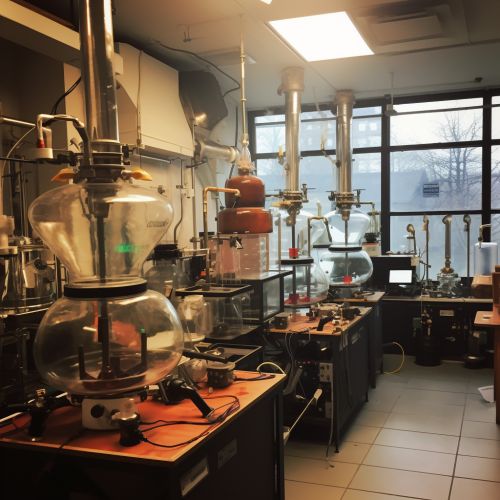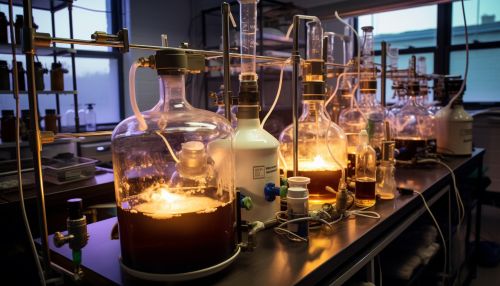Transesterification
Introduction
Transesterification is a chemical reaction that involves the exchange of an ester group with an alcohol to form a different ester. This process is commonly used in the production of biodiesel, where vegetable oils or animal fats (triglycerides) are converted into fatty acid methyl esters (FAMEs) using methanol. Transesterification is a reversible reaction and can be driven to completion by removing one of the products, often through distillation.
Chemistry of Transesterification
In the transesterification process, an ester reacts with an alcohol to form a different ester. The reaction is catalyzed by the presence of an acid or a base. The general formula for a transesterification reaction is:
R1COOR2 + R3OH → R1COOR3 + R2OH
where R1, R2, and R3 are alkyl or aryl groups. The original ester (R1COOR2) and the alcohol (R3OH) are the reactants, and the products are the new ester (R1COOR3) and a different alcohol (R2OH).


Mechanism of Transesterification
The mechanism of transesterification involves three major steps: initiation, propagation, and termination. In the initiation step, the catalyst (an acid or a base) reacts with the ester to form an intermediate. In the propagation step, the intermediate reacts with the alcohol to form a new ester and a different alcohol. In the termination step, the reaction is driven to completion by removing one of the products, often through distillation.
Applications of Transesterification
Transesterification has a wide range of applications in various fields. Some of the major applications are discussed below:
Biodiesel Production
Transesterification is the primary method used for the production of biodiesel. In this process, vegetable oils or animal fats, which are triglycerides, are reacted with methanol in the presence of a catalyst to produce fatty acid methyl esters (FAMEs) and glycerol. The FAMEs are the biodiesel, and the glycerol is a byproduct that can be used in other industries.
Polymer Modification
Transesterification is also used in the modification of polymers. This process can change the properties of the polymer, making it more suitable for specific applications. For example, the transesterification of polyethylene terephthalate (PET) can be used to produce a variety of different materials with different properties.
Drug Synthesis
In pharmaceutical chemistry, transesterification is used in the synthesis of certain drugs. For example, the drug aspirin is produced by the transesterification of salicylic acid with acetic anhydride.
Transesterification Catalysts
The transesterification reaction is typically catalyzed by an acid or a base. The choice of catalyst can significantly affect the reaction rate, the yield of the product, and the purity of the product. Some of the commonly used catalysts in transesterification reactions are discussed below:
Acid Catalysts
Acid catalysts, such as sulfuric acid and hydrochloric acid, are often used in transesterification reactions. These catalysts can be highly effective, but they can also lead to side reactions and require careful handling due to their corrosive nature.
Base Catalysts
Base catalysts, such as sodium hydroxide and potassium hydroxide, are also commonly used in transesterification reactions. These catalysts are generally more efficient than acid catalysts, but they can also lead to soap formation if the feedstock contains free fatty acids.
Enzyme Catalysts
Enzyme catalysts, such as lipases, can also be used in transesterification reactions. These catalysts are highly selective and can operate under mild conditions, but they can be more expensive than chemical catalysts.
